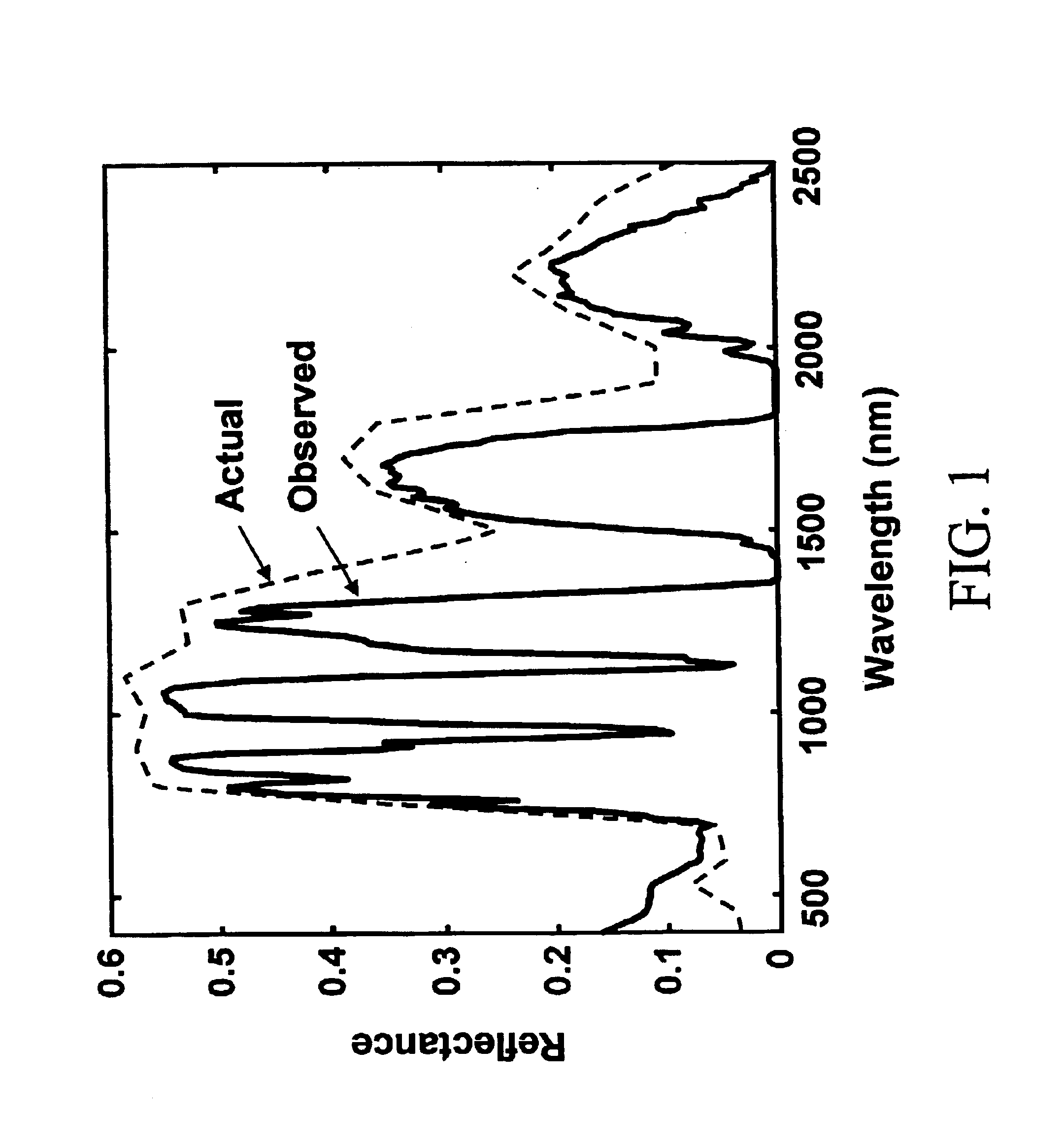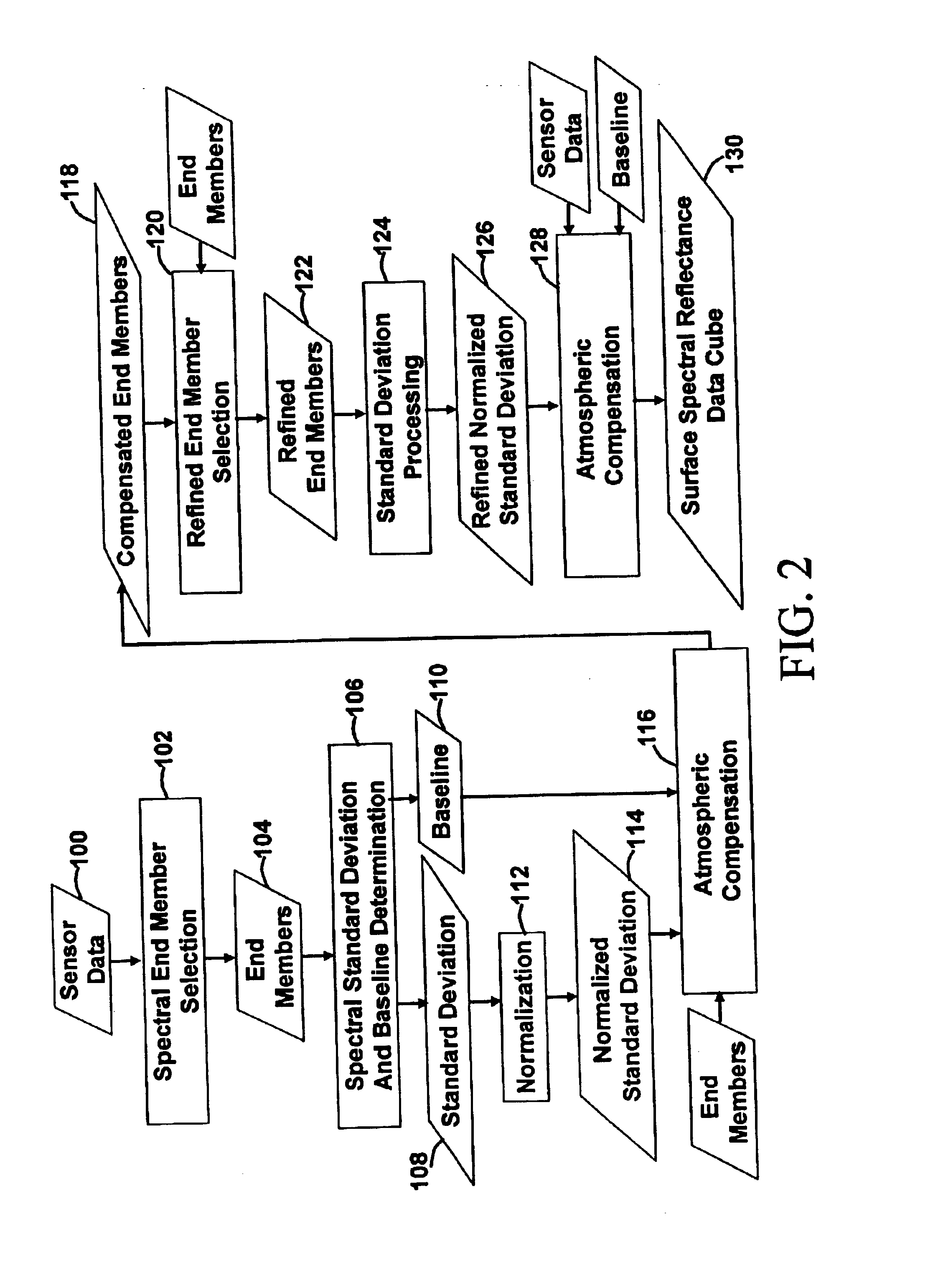Method for performing automated in-scene based atmospheric compensation for multi-and hyperspectral imaging sensors in the solar reflective spectral region
a multi-and-hyperspectral imaging and in-scene correction technology, applied in scene recognition, spectrum investigation, instruments, etc., can solve the problems of inapplicability, time-consuming, and complicated calculations, and achieve the effect of superior computational speed of atmospheric correction methods
- Summary
- Abstract
- Description
- Claims
- Application Information
AI Technical Summary
Benefits of technology
Problems solved by technology
Method used
Image
Examples
Embodiment Construction
[0047]FIG. 2 depicts the data processing flow for the preferred embodiment. The sensor data 100 is comprised of multi- or hyperspectral imagery in which at least two spectral bands below 3000 nm are available. There is no upper limit to the number of spectral bands that can be handled. The input data can be in units of calibrated radiance or apparent spectral reflectance or even in uncalibrated raw counts. The choice of units only impacts the selection of normalization method 112.
[0048]A spectral end member selection algorithm 102 is used to select a plurality of spectrally-diverse pixels. While there are a number of suitable end member algorithms, the Spectral Sciences, Inc. SMACC (Sequential Maximum Angle Convex Cones) algorithm was utilized for its excellent computational efficiency. Other methods for selecting a diverse set of pixel spectra will be known to those skilled in the art, and may include clustering algorithms as well as end member algorithms; however, clustering algor...
PUM
| Property | Measurement | Unit |
|---|---|---|
| smoothness | aaaaa | aaaaa |
| computational time | aaaaa | aaaaa |
| computational time | aaaaa | aaaaa |
Abstract
Description
Claims
Application Information
 Login to View More
Login to View More - R&D
- Intellectual Property
- Life Sciences
- Materials
- Tech Scout
- Unparalleled Data Quality
- Higher Quality Content
- 60% Fewer Hallucinations
Browse by: Latest US Patents, China's latest patents, Technical Efficacy Thesaurus, Application Domain, Technology Topic, Popular Technical Reports.
© 2025 PatSnap. All rights reserved.Legal|Privacy policy|Modern Slavery Act Transparency Statement|Sitemap|About US| Contact US: help@patsnap.com



